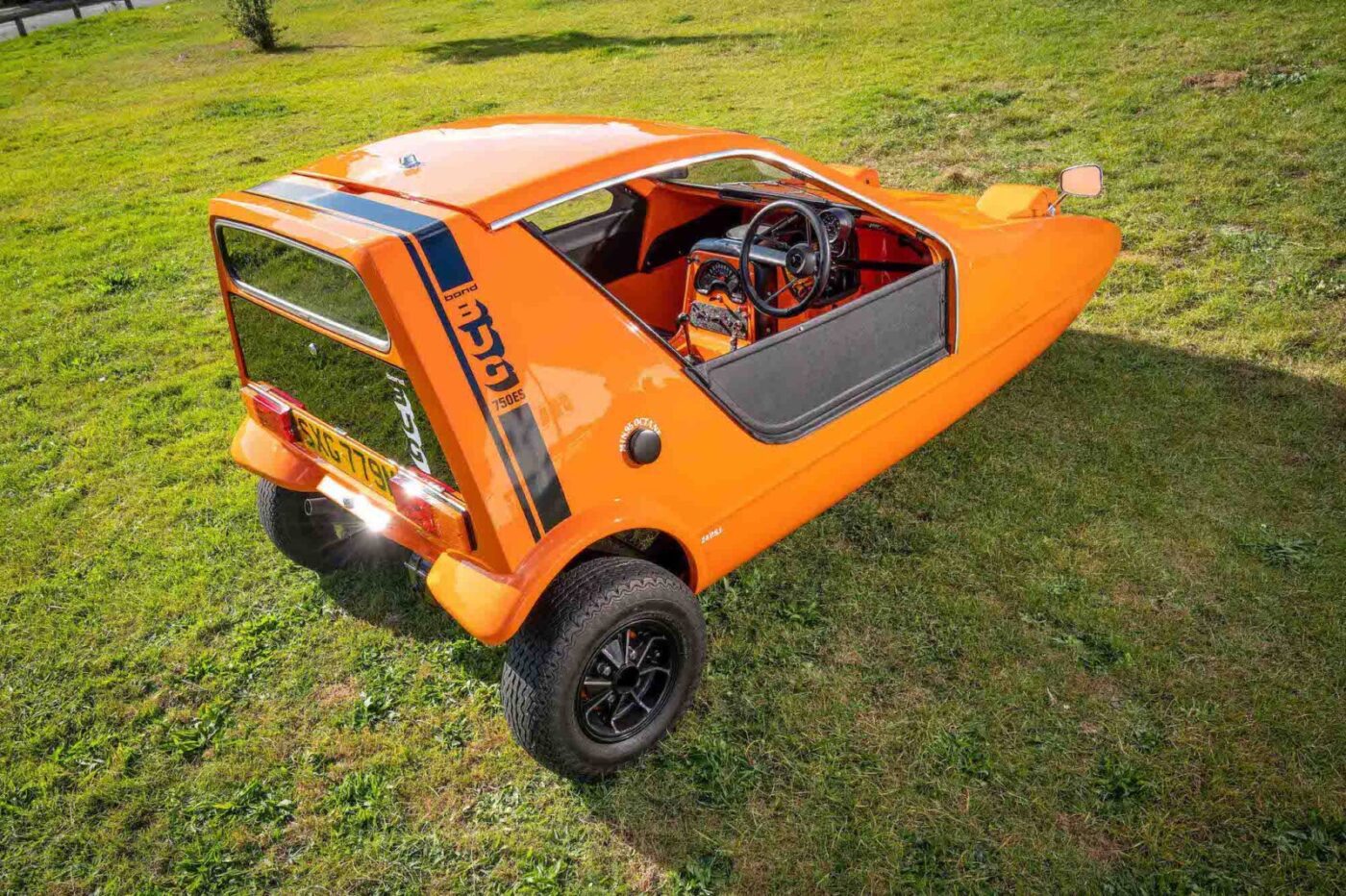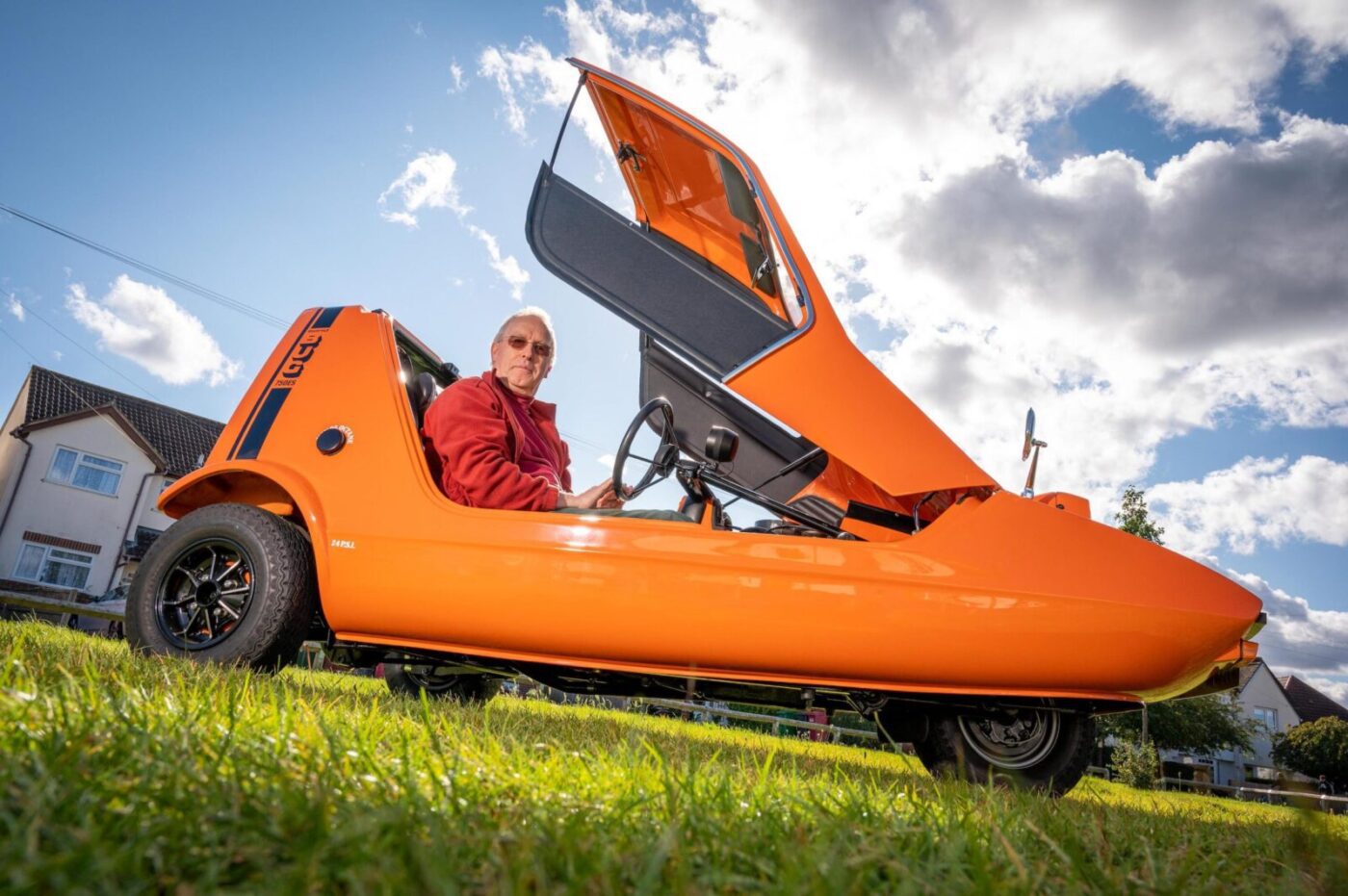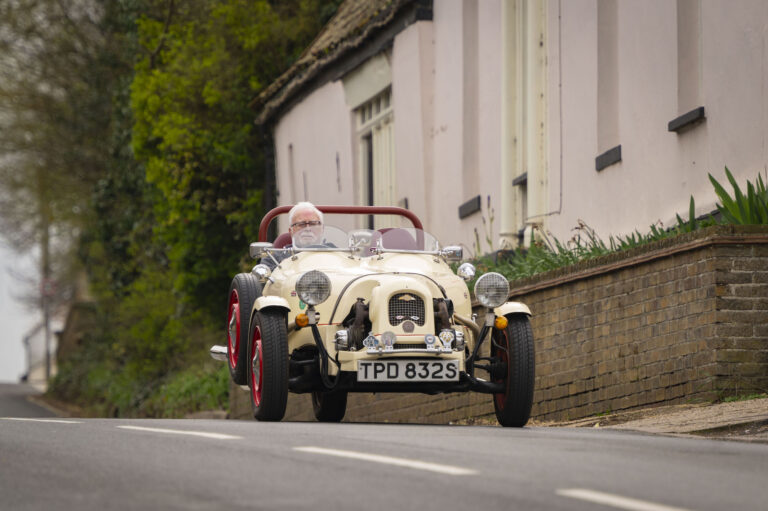Nick Heys’ Bond Bug divided opinion among his fellow students when he bought it new back in 1974.
“It was definitely split into two camps: those who thought it was entirely ludicrous and ridiculous in every sense, and those who thought it was quite amusing,” he says, chatting from his home in Slough.
“It was very heavily polarized, but everyone wanted a go in it, even the people who didn’t like it. They all wanted to have a drive in it to see what it was like.”
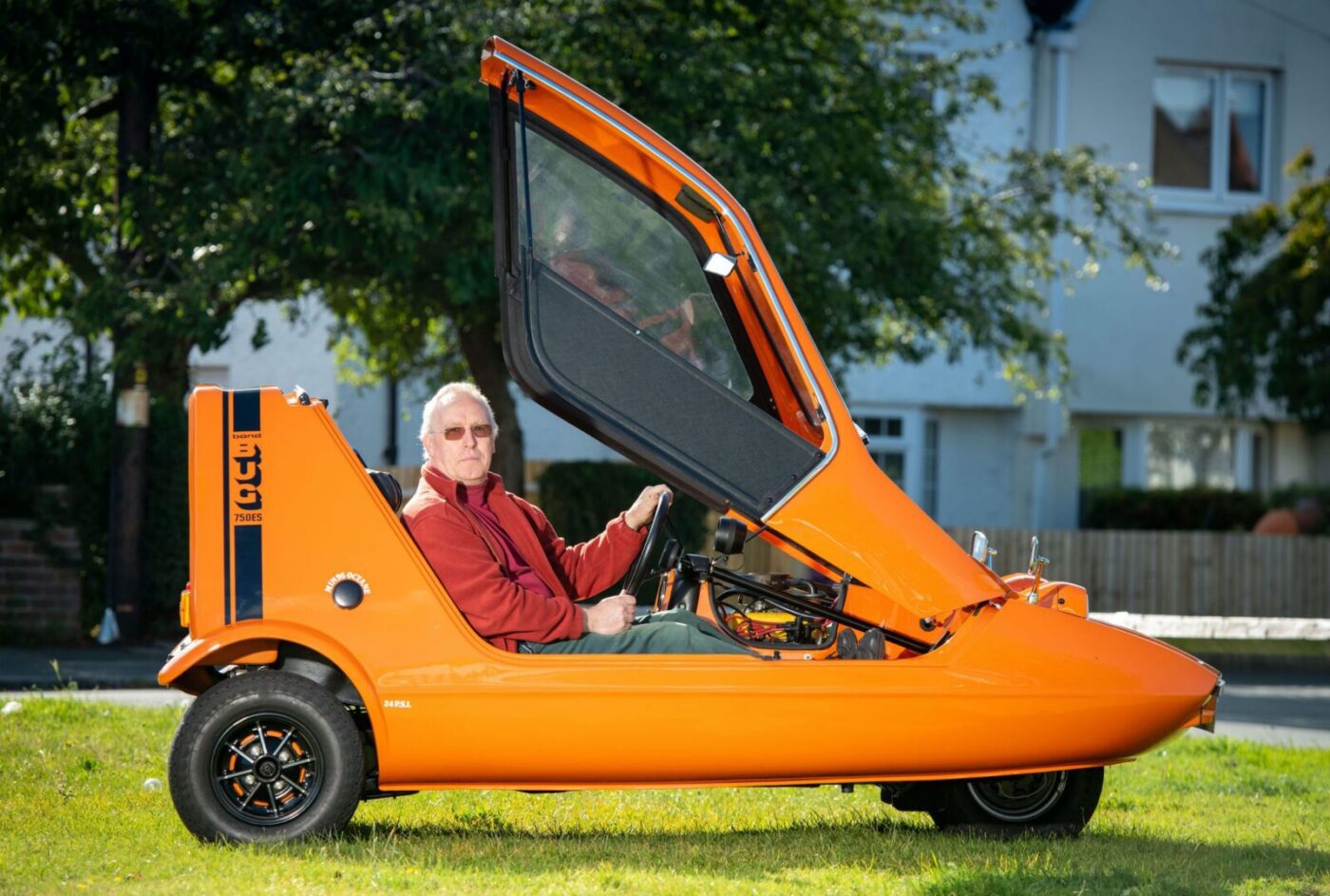
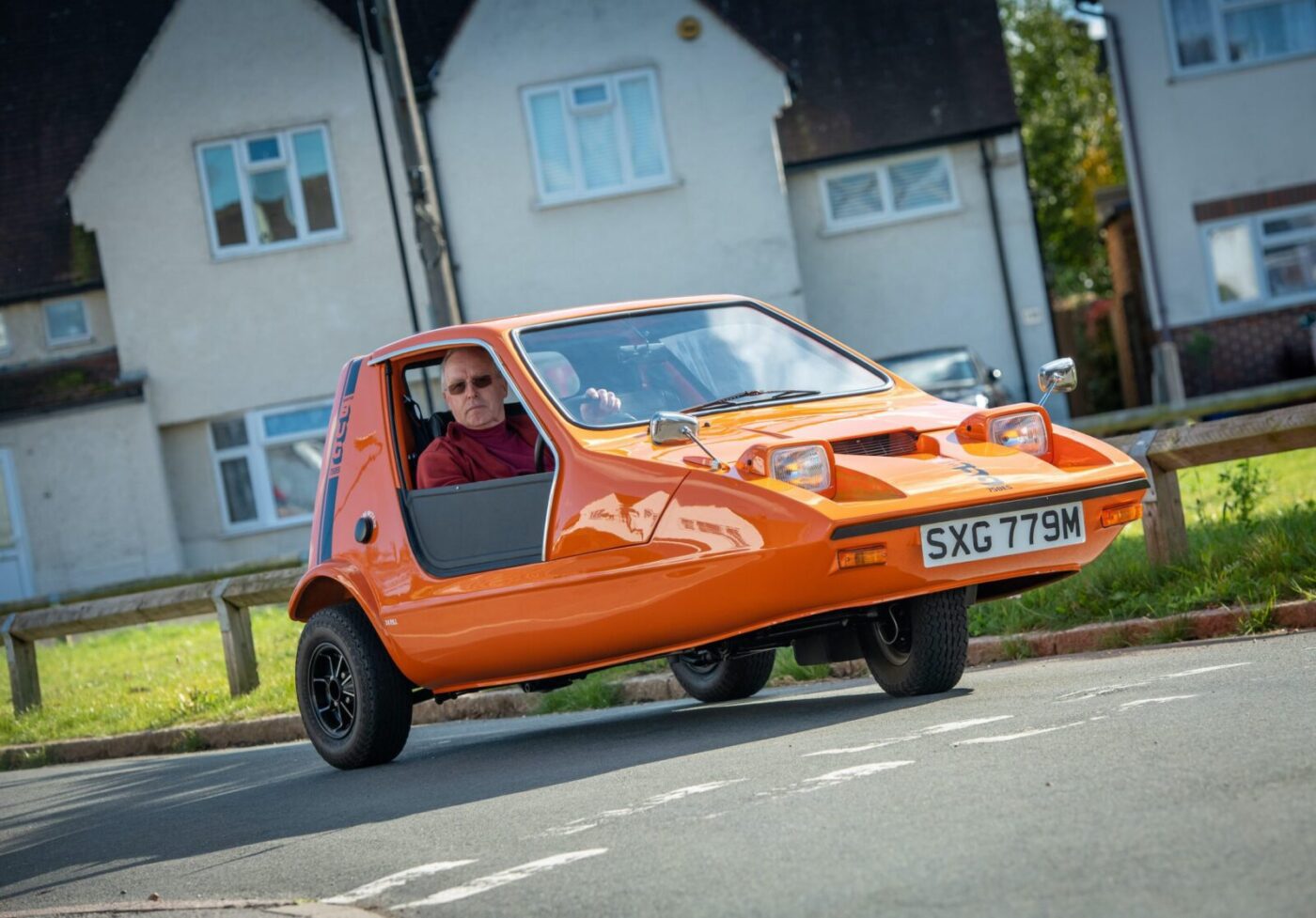
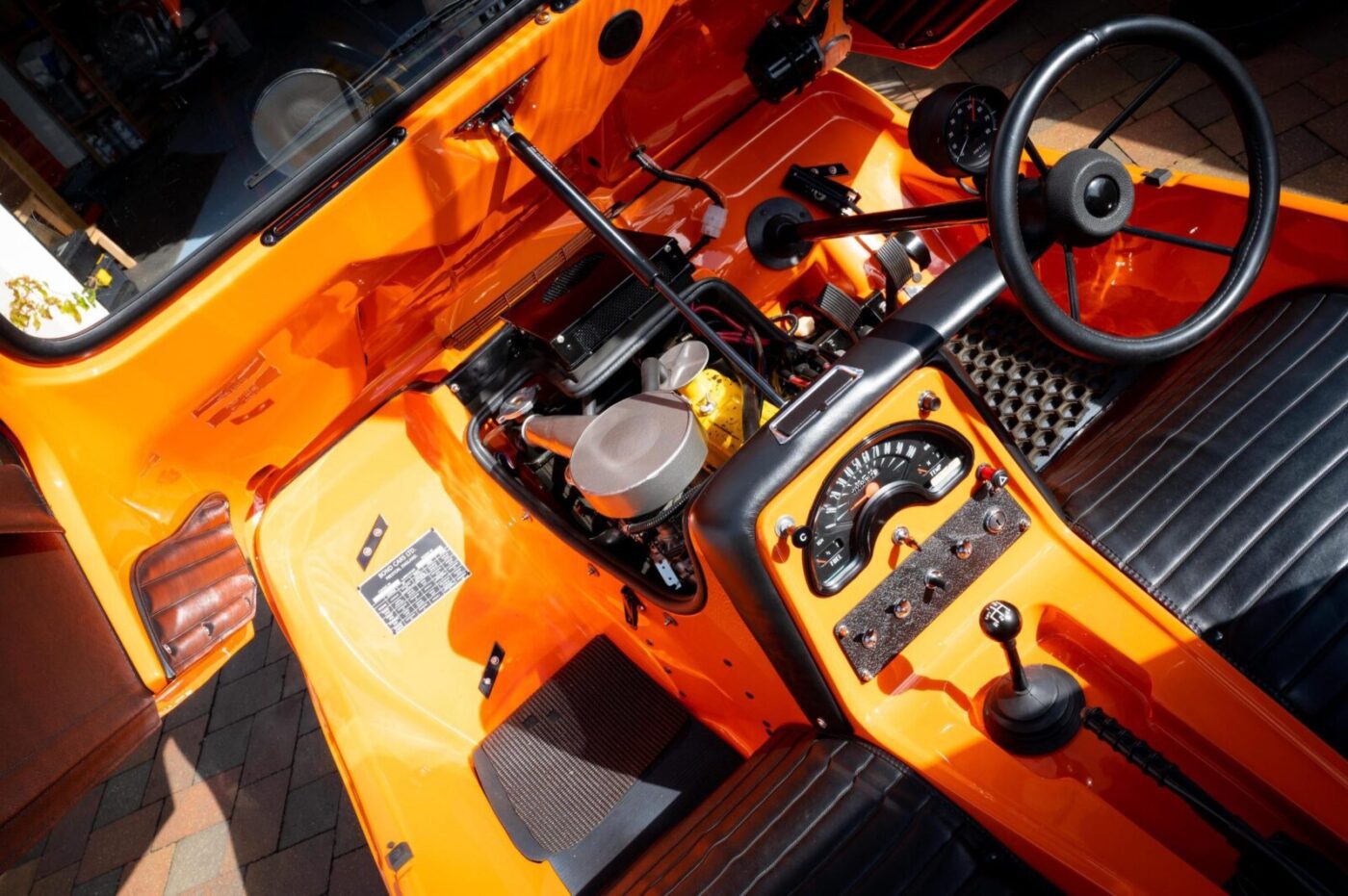
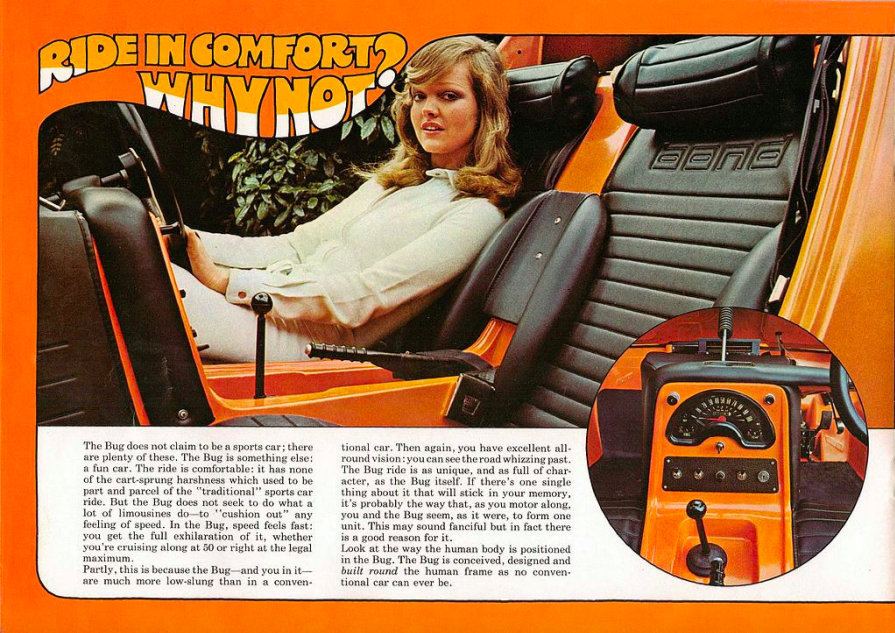
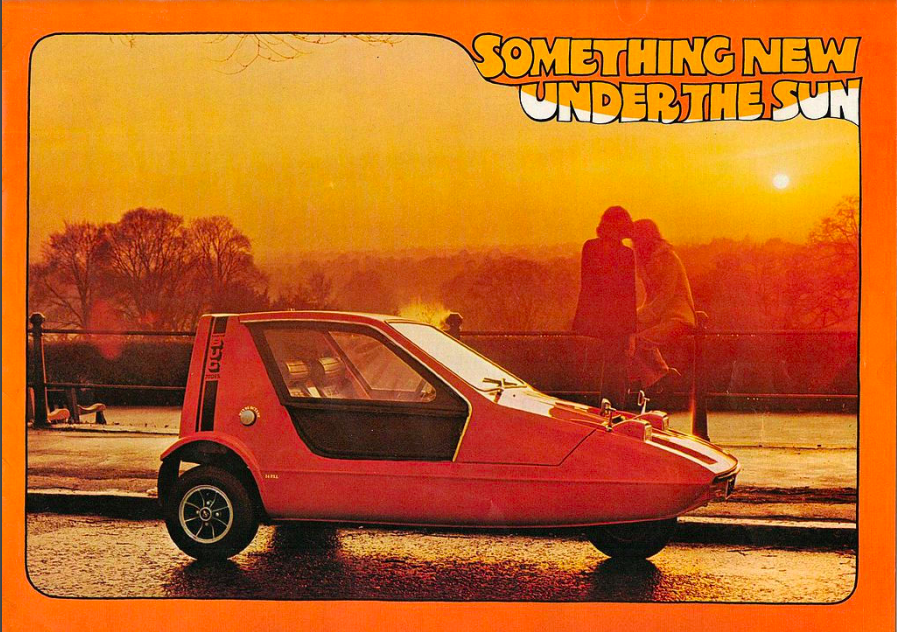
Fun Bug
They’re likely to have got out, clumsily, with a smile on their face, because few cars are more ‘fun’, either to travel in or to look at, than a Bug.
Manufactured between 1970 and 1974, the three-wheeler was based on the Reliant Regal, with later cars like Nick’s using the lively – at least in this lightweight car – 750cc engine from the Robin.
Designer Tom Karen, also responsible for the Raleigh Chopper, Bush radio, and the Marble Run game, had been feeding in designs for a more sporty version of the Regal for years before Reliant finally gave him the green light after buying the Bond company.
The result was an “ingenious” (Motor magazine) wedge-shaped, two-seat microcar aimed at 18 to 24-year-olds after something more interesting than a Mini or a Hillman Imp.
Enter Nick, who in April 1974 was a 21-year-old geology student and the owner of a troublesome Imp plagued by chronic overheating and running on three cylinders.
The search for a new car focused on another Imp, a Honda Z, and a Bond Bug.
“I looked at a better Imp, but I knew that down the road it was probably going to give me just as much trouble as the one I was trying to get rid of,” he says. “The Honda Z looked so cute, but I’d seen Bugs around and settled on that. Usually there’d be a crowd of people, and in the middle there’d be a Bond Bug.
“The fact it had three wheels was totally irrelevant to the image and the style that it seemed to portray, and once I’d sat in it and driven it around the block I thought ‘yeah, I can go with this, I’ll have this one’.”
Using money he’d saved from working in a car accessory shop, his student grant and a bit of finance, he paid £699 for a brand new Bug 750ES, slightly more than the cost of a basic Mini.
READ MORE ABOUT SOME OF OUR GREATEST CLASSIC CARS WITH

A series of articles on our Cult Classics site.
“Style and panache”
“But of course you got all this extra style and panache,” he smiles.
“It was extraordinarily comfortable because of the way the seats are moulded, and it seemed to be very, very fast because you’re so low to the ground, like driving a go-kart.
“The stability and handling were much better than you’d anticipate from a three-wheel car, which wasn’t something you were particularly conscious of.
“In a straight line it was certainly faster than a basic Mini, but you couldn’t out-corner it. It would do 80mph-plus very easily, but it was deafening because the engine’s doing over 5000rpm and it’s sat right in the car between the driver and passenger, though under a cover.”
The fact that he still owns it nearly 50 years on is testament to the Bug’s enduring appeal, and Nick’s determination to restore it after more than two decades off the road.
“It’s one of the icons of my life,” he says. “It’s part of me, in fact. It’s always been there, I’ve always been trying to do something with it, or to it, or because of it.”
His wife, Jaga, who he met at the Luton College of Technology, also has a soft spot for the tiny tangerine car.
“I think she was quite taken with it, because shortly after I bought it we had to go on a field trip and she decided she would come in my car rather than in the minibus,” says Nick, 69.
“I used to love driving it,” adds Jaga. “In fact, my first driving lessons were in the Bug, because that’s all we had.
“We used to drive along the motorway, take the side bits off, and the speed was intensified when you’re so low to the ground.
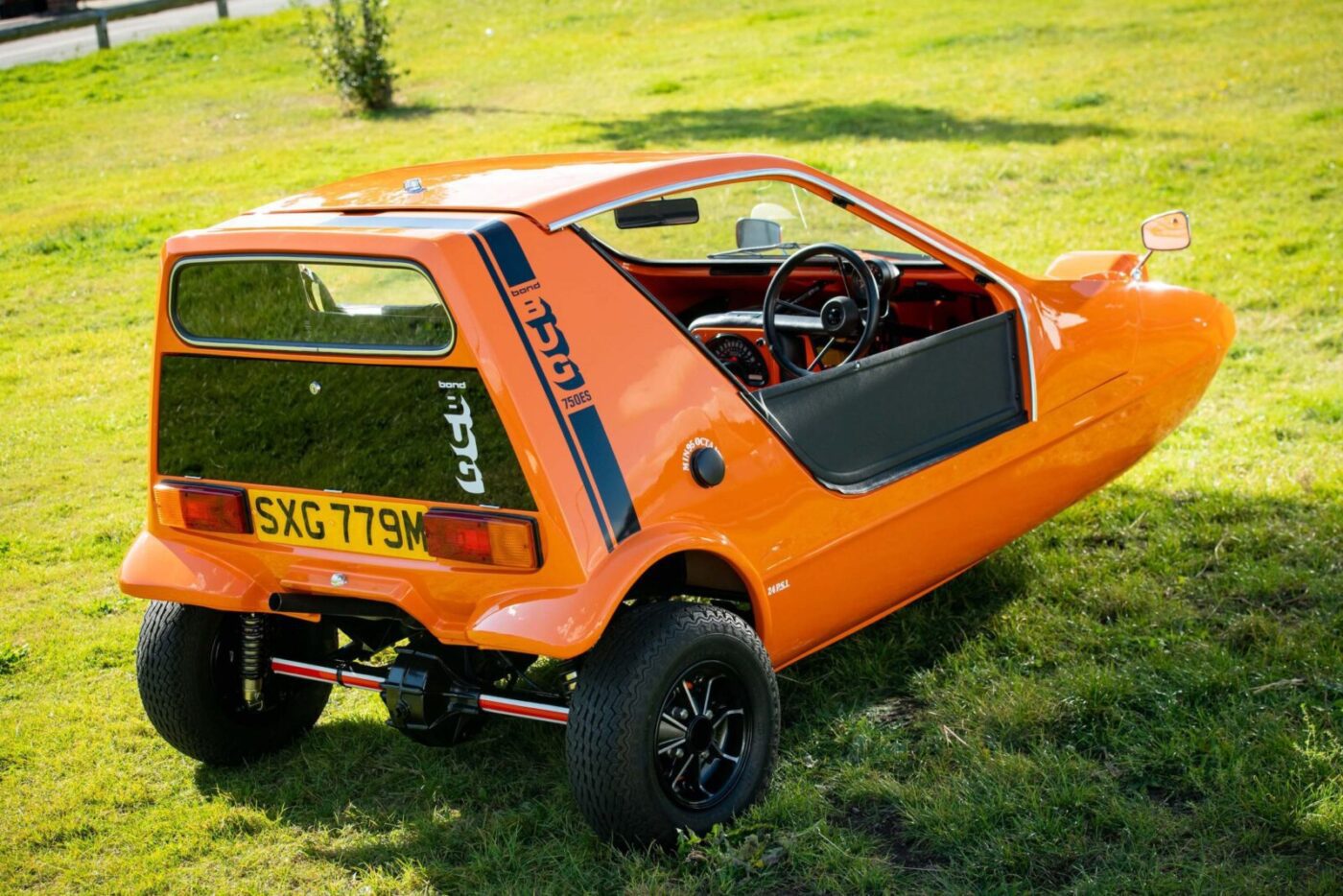
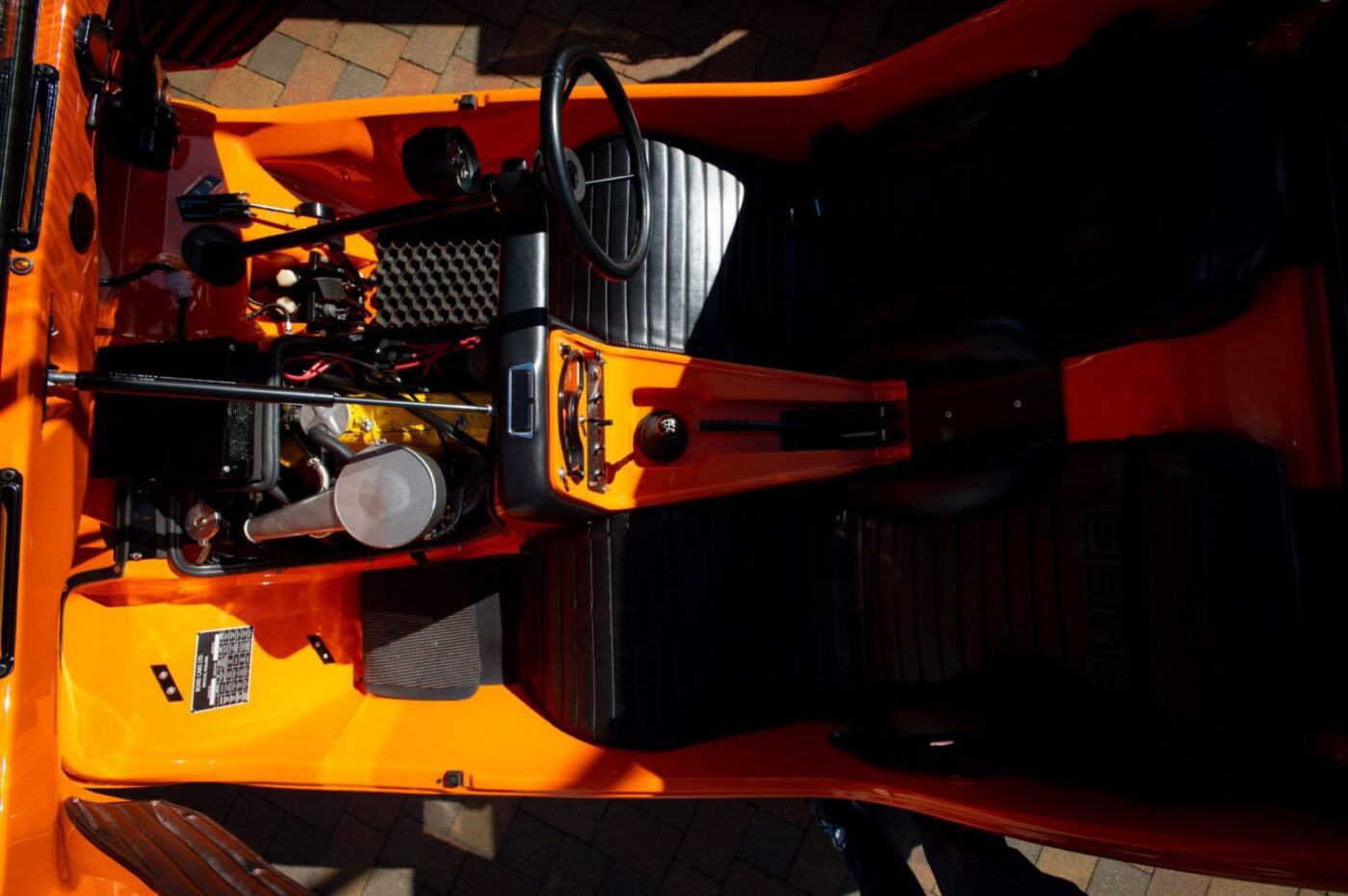
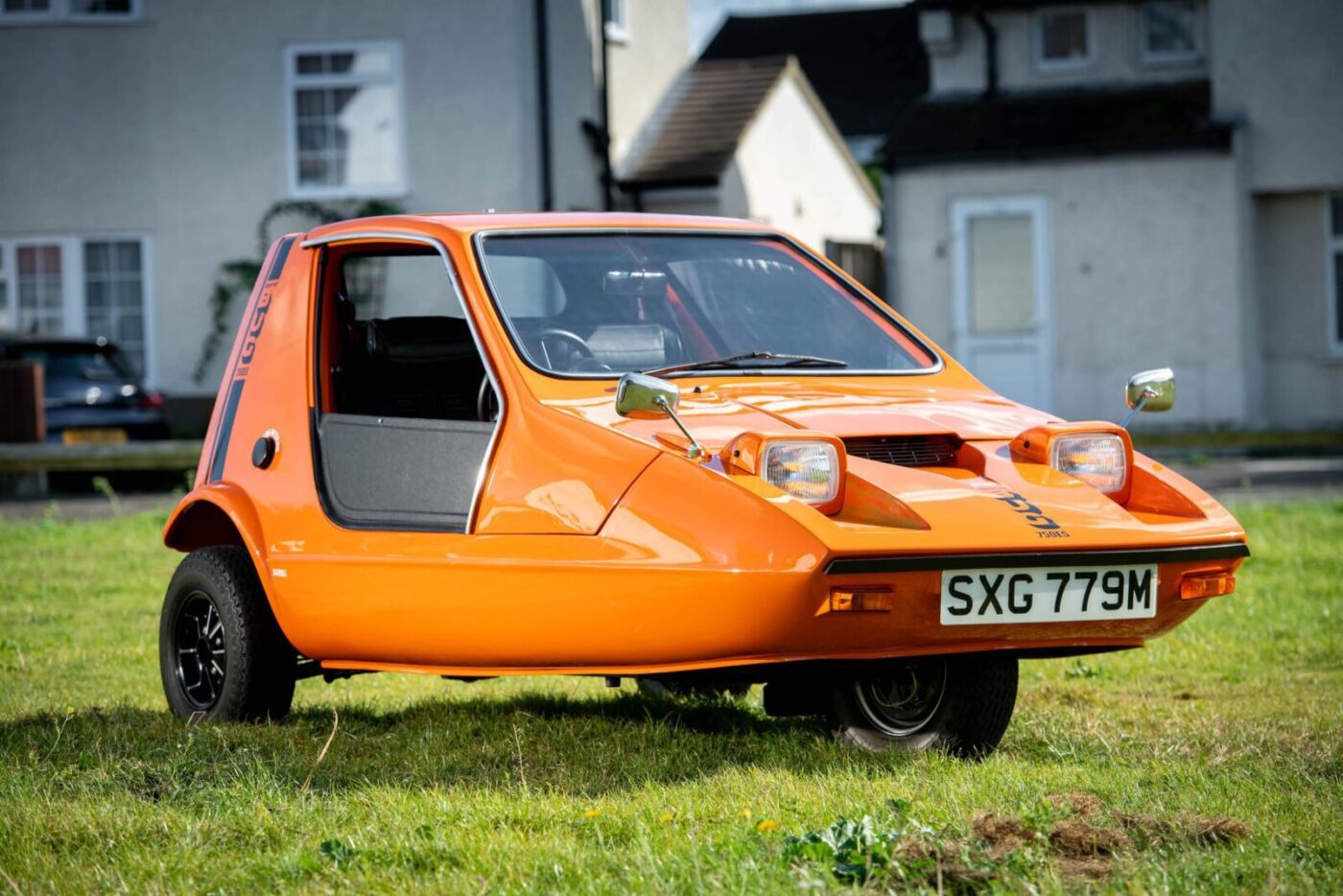


Plenty of room
“I was 6ft tall – I think I’ve shrunk – and bystanders used to be most intrigued watching me get in and out to see how I’d accomplish that with sufficient decorum. But I could fit my legs in quite comfortably, there’s plenty of room.”
The Bond was the couple’s only transport for six years, until their son Stefan was born in 1980; however, the car had needed significant repairs after a crash in 1975.
It was New Year’s Day, and Nick slid into the back of a Ford Cortina at traffic lights.
“A lot of your braking is on the single front wheel, and it was a bit slidey that winter’s day and I didn’t stop in time,” he says, the fibreglass front “blowing up like an eggshell”.
“I put about 20 or 30 bits of fibreglass in the passenger seat, left the car there and went back and got it in daylight the next day, then I glued it back together.
“It looked dreadful! There are ways of doing it properly; I didn’t, I just glued them edge to edge until it resembled what it should have looked like.
“I had it resprayed so it was all the same colour, but you could see all the cracks and crazing of the broken front sticking through the paint.”
81.5% of customers could get a cheaper quote over the phone
Protect your car with tailor-made classic car insurance, including agreed value cover and discounts for limited mileage and owners club discounts

To Poland in a Bug
The Bug was still patched together like this when the couple drove it all the way to Poland, where Jaga has relatives, for their honeymoon in 1976.
“Of course, in Poland they’d never seen anything like that at all,” says Nick, the car’s styling in stark contrast to Eastern Bloc motors like the Polski Fiats, Trabants and FSOs.
“During one of the border crossings from Poland to East Germany, there was a Rolls Royce or a big Jaguar in the queue, and all the drivers, pedestrians, and bystanders were poring over this car. Then we turned up and they came and pored over our car.
“In Poland in those years you would park in guarded parking lots. You signed in with a nightwatchman, parked and he wouldn’t let anyone else take that car away.
“In one of the places that we left it, they threw a tarpaulin over it so it would stop attracting visitors because the guard was being run ragged by shooing people away from it.”
As for the journey, the little car coped fine, apart from some issues with poor quality Polish petrol.
“Some of the petrol in Poland in those years contained a lot of dust and debris, so I do remember having to clear out the carburettor a couple of times, but nothing I couldn’t manage,” says Nick. “Apart from that, it didn’t really miss a beat.”
When Stefan was born, the Bug was replaced by a Renault 4, but not before a couple of trips he has always remained blissfully unaware of, until now.
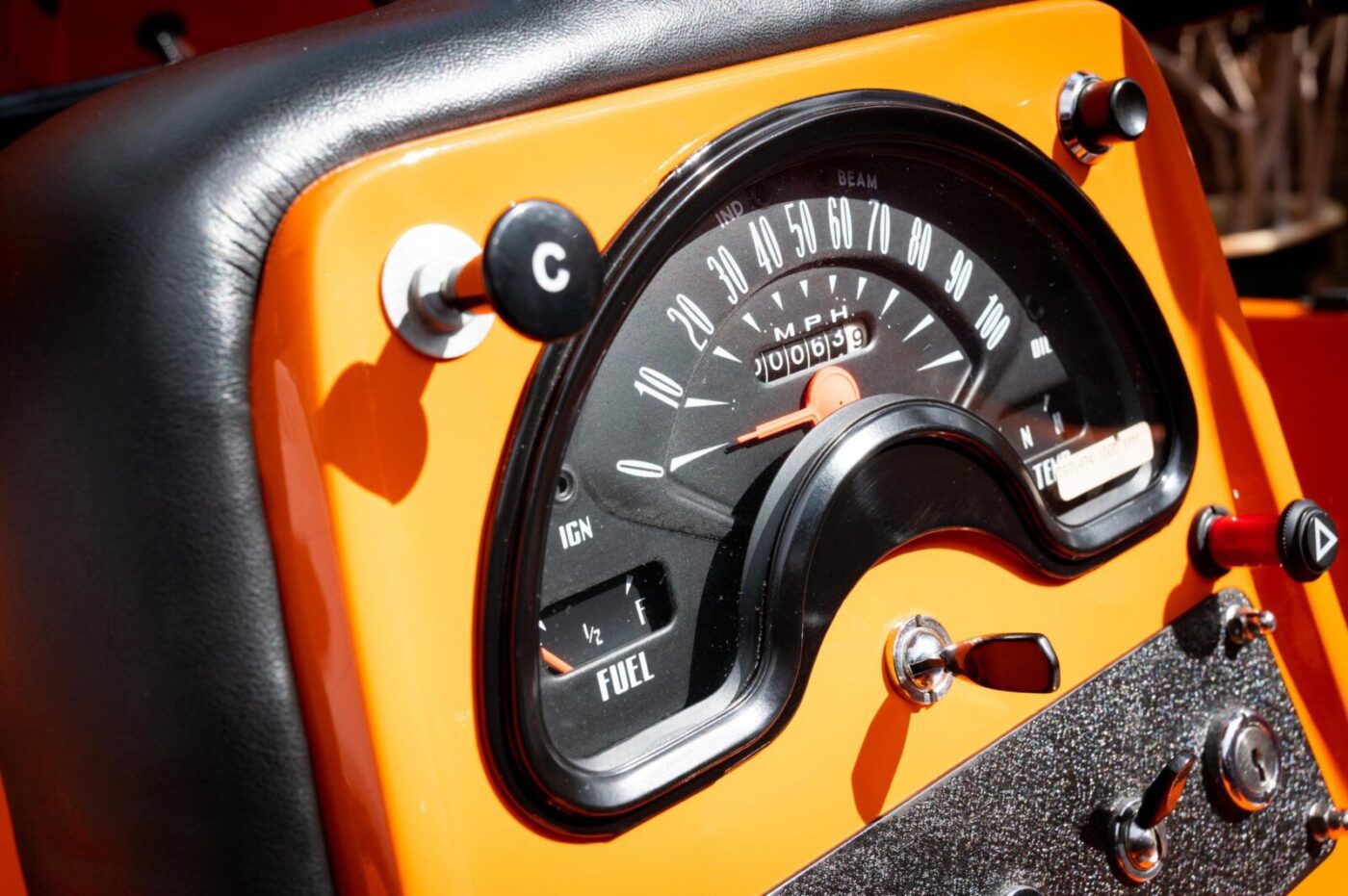
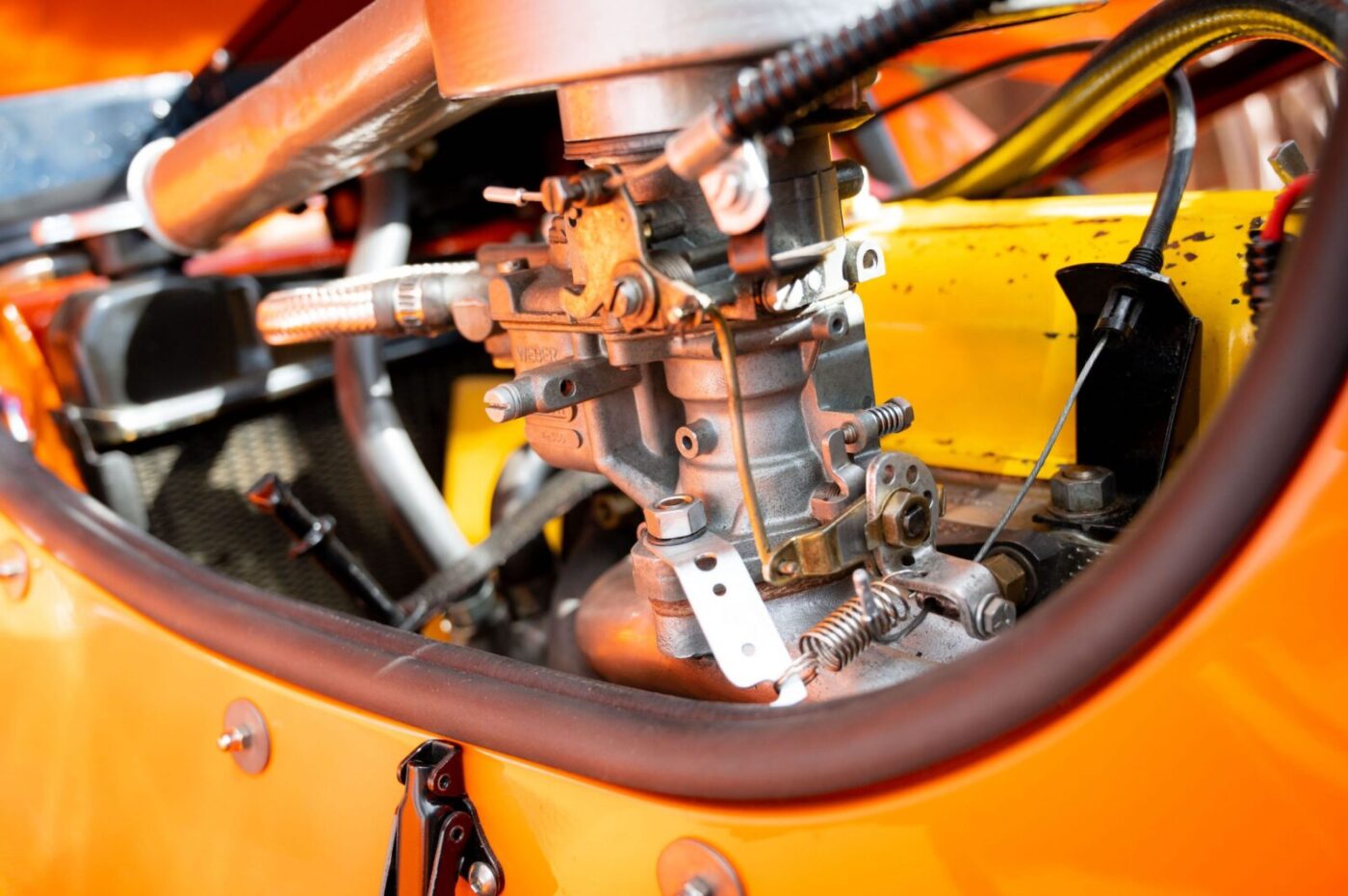
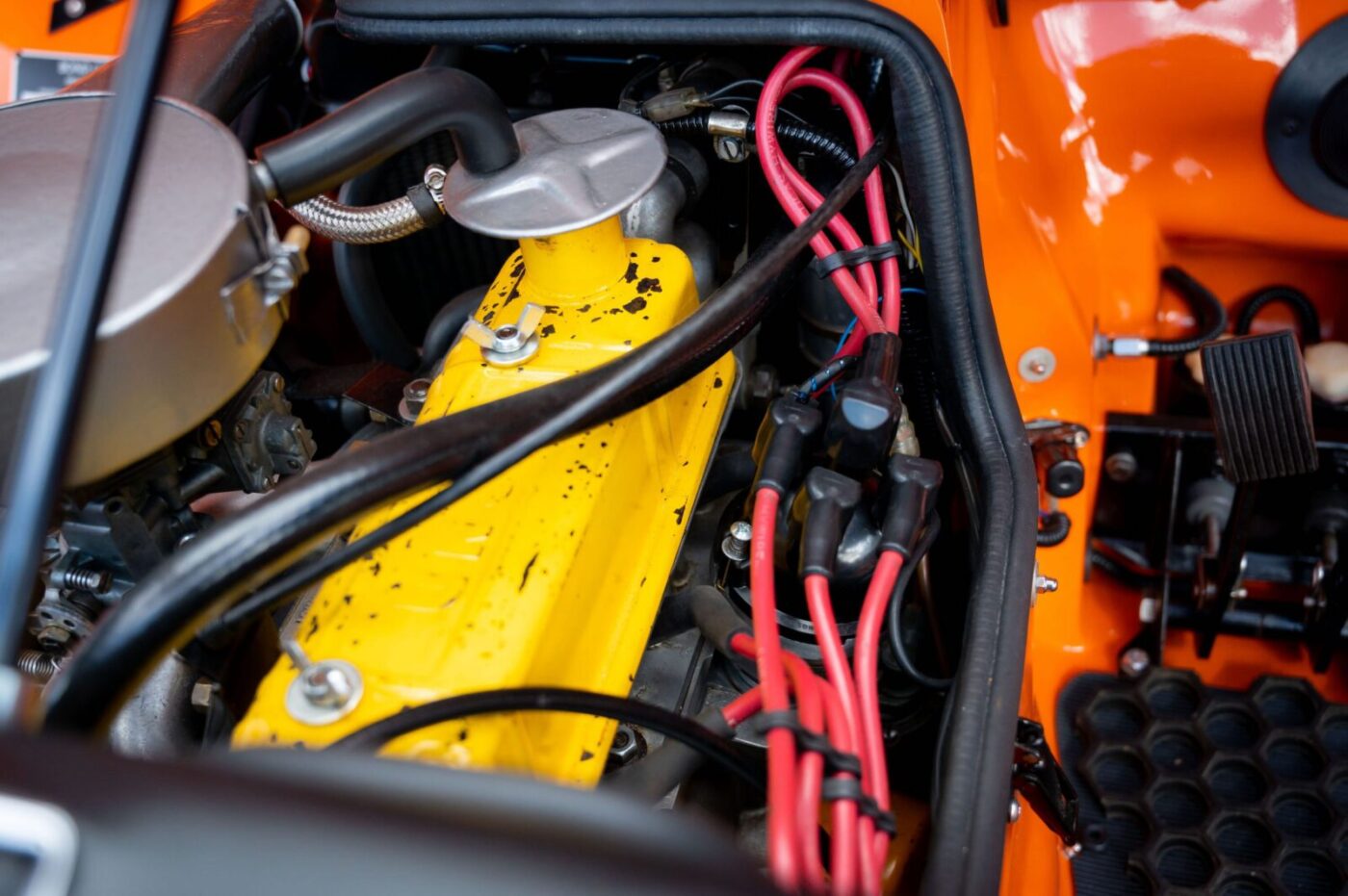


Baby on a parcel shelf
“When he was newly born, only this big, there were a couple of journeys we took, including a short holiday, when we just put him on the rear parcel shelf,” says Nick, somewhat guiltily. “We waited until he was asleep, wrapped him up in his swaddling clothes and tucked him into the shelf. Different times!”
The Bug was consigned to the garage and largely forgotten about, until Nick bought an old bodyshell with a Reliant-manufactured front crash panel in 1990, and used it to replace his previous home-made repair.
For the next 24 years, he restored every aspect of the car, replacing some things and getting the detergent and toothbrush out to clean up others, like the original seats that now look virtually new.
“I didn’t have an awful lot of time to spend, just the odd afternoon here and there,” he says.
“It was just a hobby really, but by 2010 I had the body ready to go off to the bodyshop for paint, and the money to pay for it.”
The question of colour comes up, which Nick reveals is one of the biggest debates in the Bond Bug community.
“The colour is probably closest to Ford Vista Orange, so some of the club members will go with that,” he says. “Most of us these days use a RAL colour. I’ve got RAL2010 but there are some in the club who say it should be RAL2008.
“You can have 50 lined up and every owner will say that theirs is exactly as it was.
READ MORE ABOUT SOME OF OUR GREATEST CLASSIC CARS WITH

A series of articles on our Cult Classics site.
Which orange?
“But, of course, it never can be as it was because in those days it was hand sprayed by cellulose, so it depended on the man, the gun, the weather, the mix of paint that week. They were all orange, but which orange?”
Nick took the engine apart and renewed the main bearings and the oil pump, while the original Zenith carburettor has been replaced with a Weber, which he hopes will make it run more smoothly.
The crank was taken down to the next size and the cylinders honed, before fitting new rings and reassembling the engine.
Brakes and clutch were replaced, along with some interior trim parts like the sun visors and map pockets, sourced through the club from specialist suppliers.
By 2014, the Bug was ready for an MoT and its first drive since it rolled into hiding as a six-year-old car.
“It all flooded back, the feel and the smell, the way you flop into it and have to lever yourself out, the fact that the whole roof comes down, and that it’s all a little bit claustrophobic,” he says.
“It’s still noisy, the steering feels heavy – in the meantime we’ve got used to power assisted steering – but it still seems fast because it’s so low.
“On an A-road it was, and is, quite a reasonable car to run around in. But on the motorways it gets blown about a bit, with all the heavy goods vehicles, and these days everyone’s travelling at 80mph so something that’s pootling along at 60 or 65 isn’t altogether welcome.”

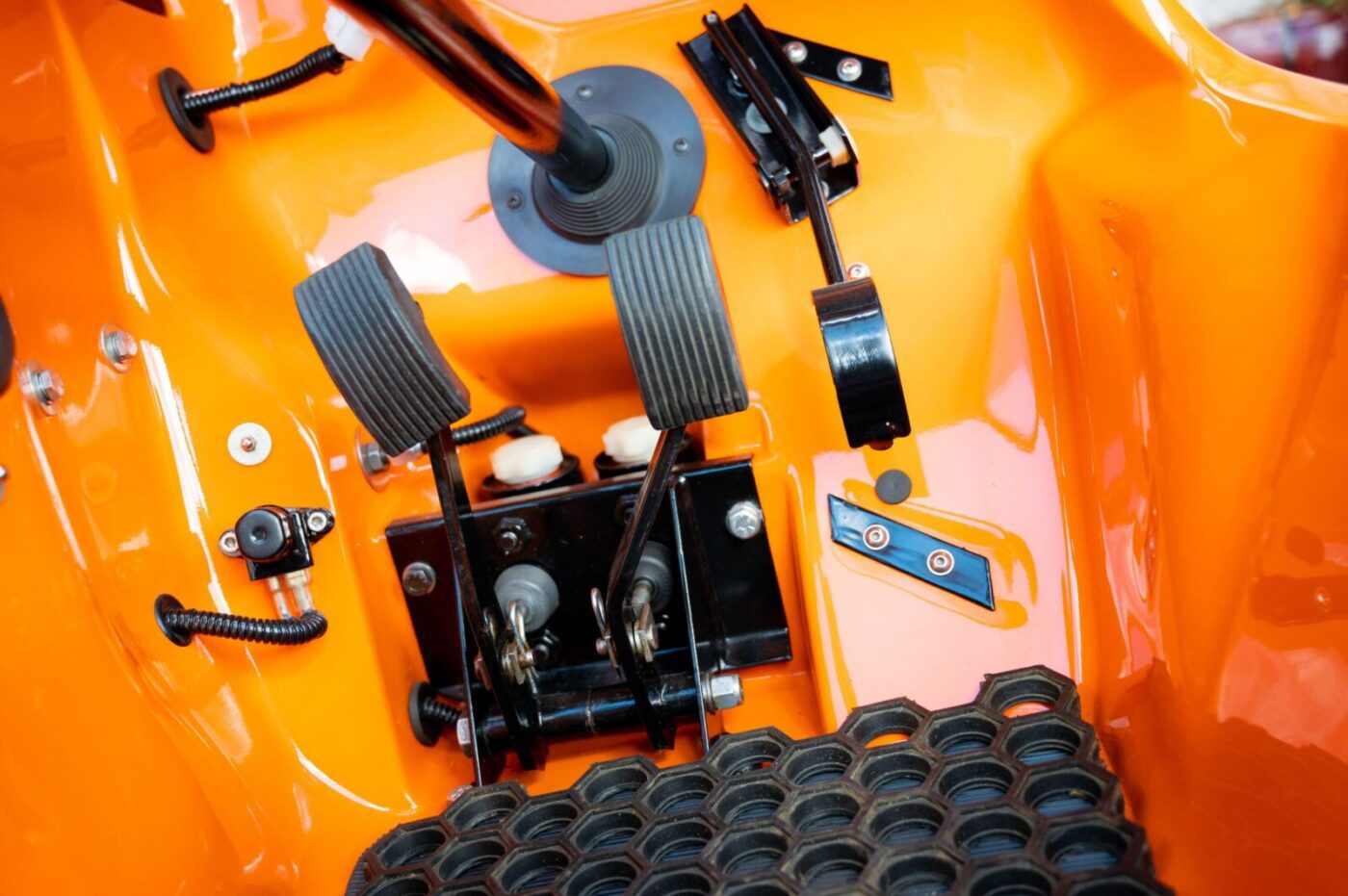
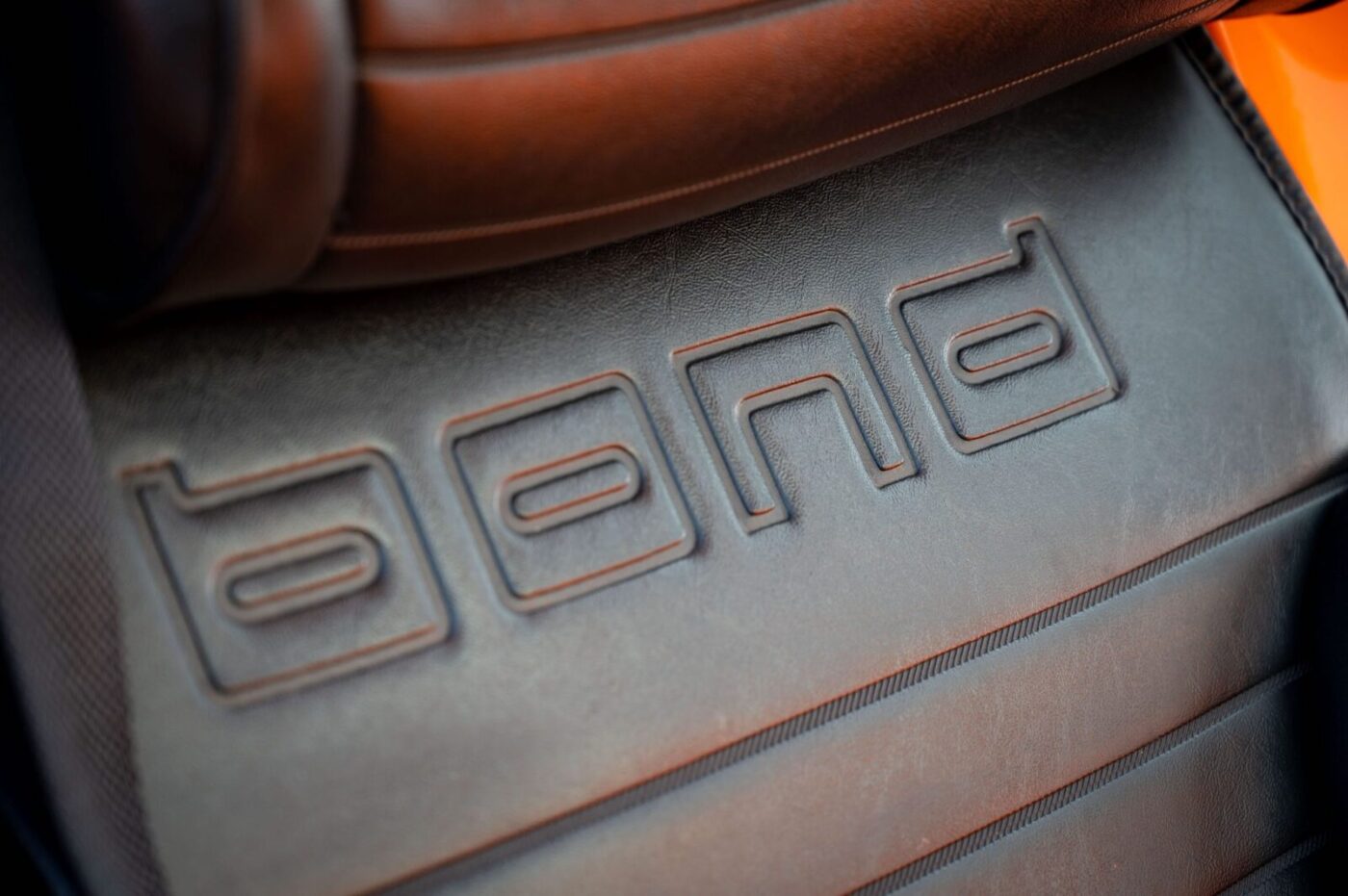
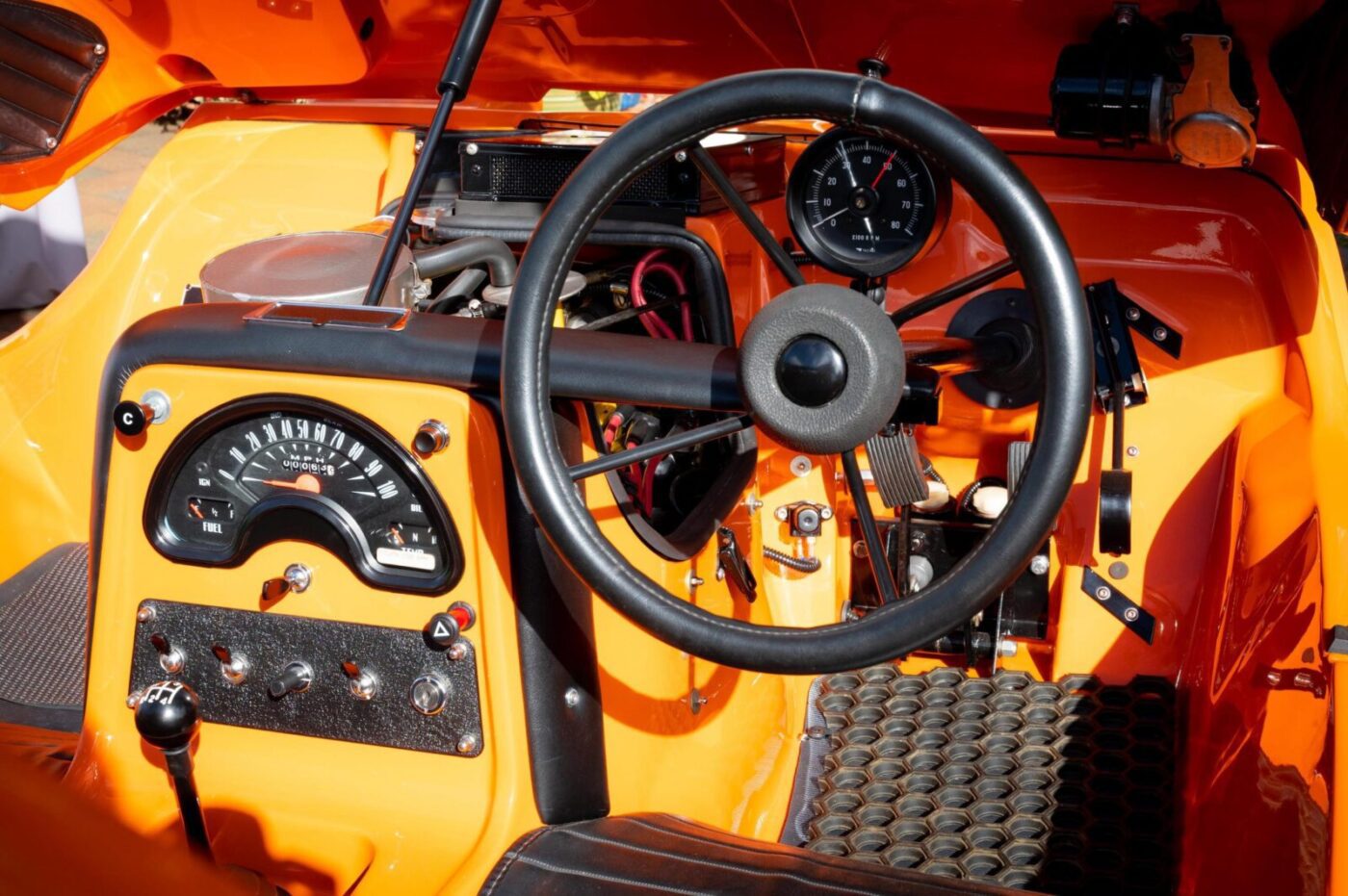
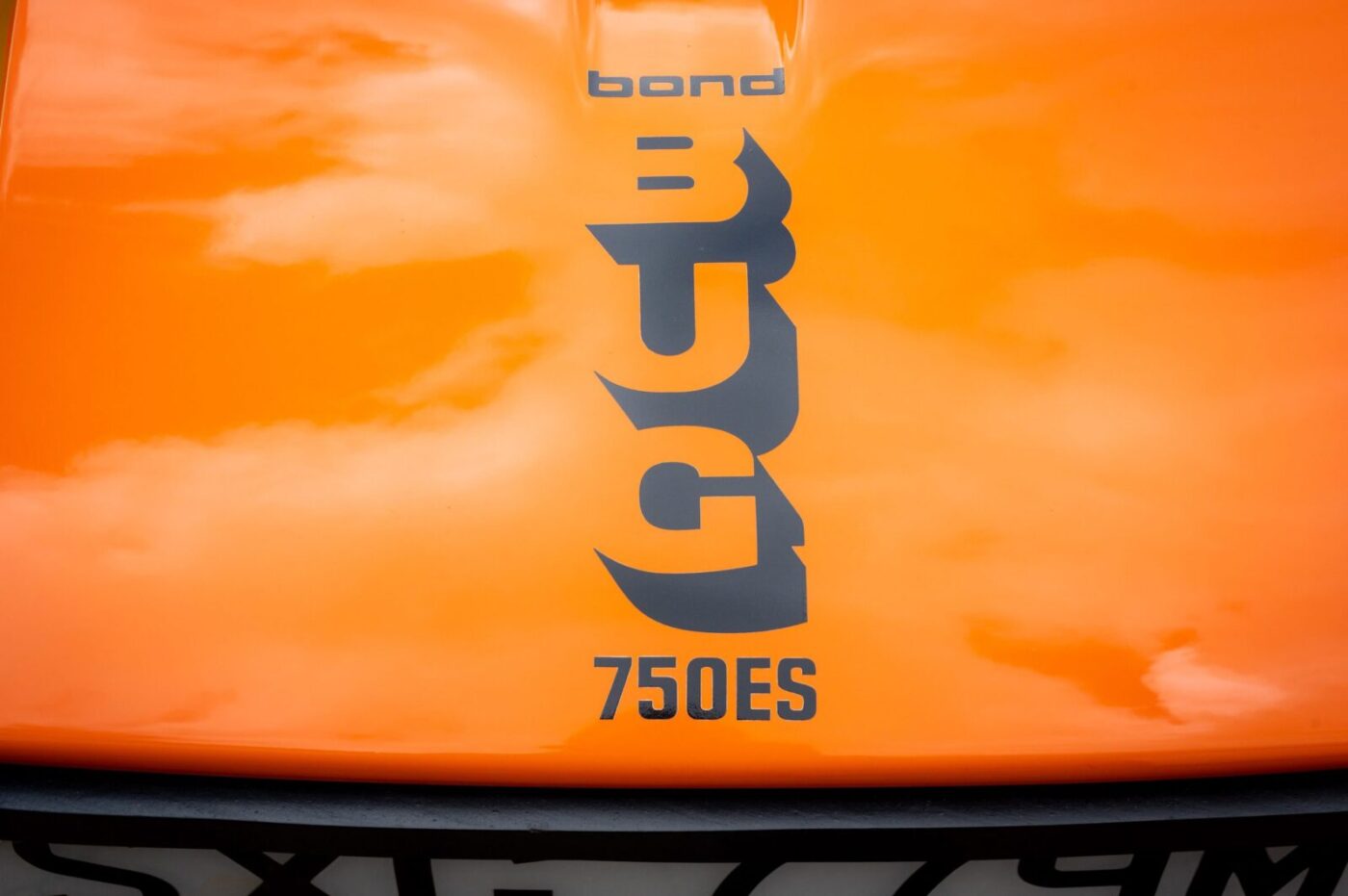
Attention-grabbing
One thing that hasn’t changed is the car’s attention-grabbing qualities.
“It’s funny because if you’re driving round all you see is people pointing fingers – you get that a lot, but then people always did,” says Nick. “That’s not a novelty to me.”
Since it’s been back on the road the Bug has been limited to local journeys. Would Nick take it back to Poland?
“I don’t think I would, no, I’m older and wiser,” he says.
We come to the car’s future and, while Nick is in no doubt that he will keep it forever, Jaga’s thoughts are more immediate.
“The future for it is to get it to a good enough state so that the engine works properly so that I can drive it for a change,” she smiles. “I’d love to drive it again, but the engine needs tuning.”
“It’s not a screaming priority, I’ve got lots of other things to keep me busy,” adds Nick. “I do it when I can…”
There has been a little more time to tinker since Nick retired from his job as a geophysicist in 2016, and Jaga strikes a more serious note about the continued presence of the car she describes as “part of my history”.
“I’m very pleased we had it, because Nick was a bit of a workaholic and when he retired, for about two years he spent his time in the garage,” she says, “and I thought ‘he needs this time and he deserves this time to just chill out, find himself, find some direction and achieve something he enjoys’.
Escapism of the Bug
“I’m very pleased he has this hobby. It’s something that really engrosses him, and gives him some escapism.”
As for the more distant future, while Stefan doesn’t drive, Nick and Jaga also have two daughters with young grandsons who adore the Bug.
“The boys love it,” says Nick. “They can’t wait to go into the garage, climb all over the seats and so on. I need to take them round the block in it soon.
“They might take it on one day.”
Until then, Nick and his fellow Buggers (the collective noun for Bug owners…) will continue to delight everyone who happens to see them pass by.
